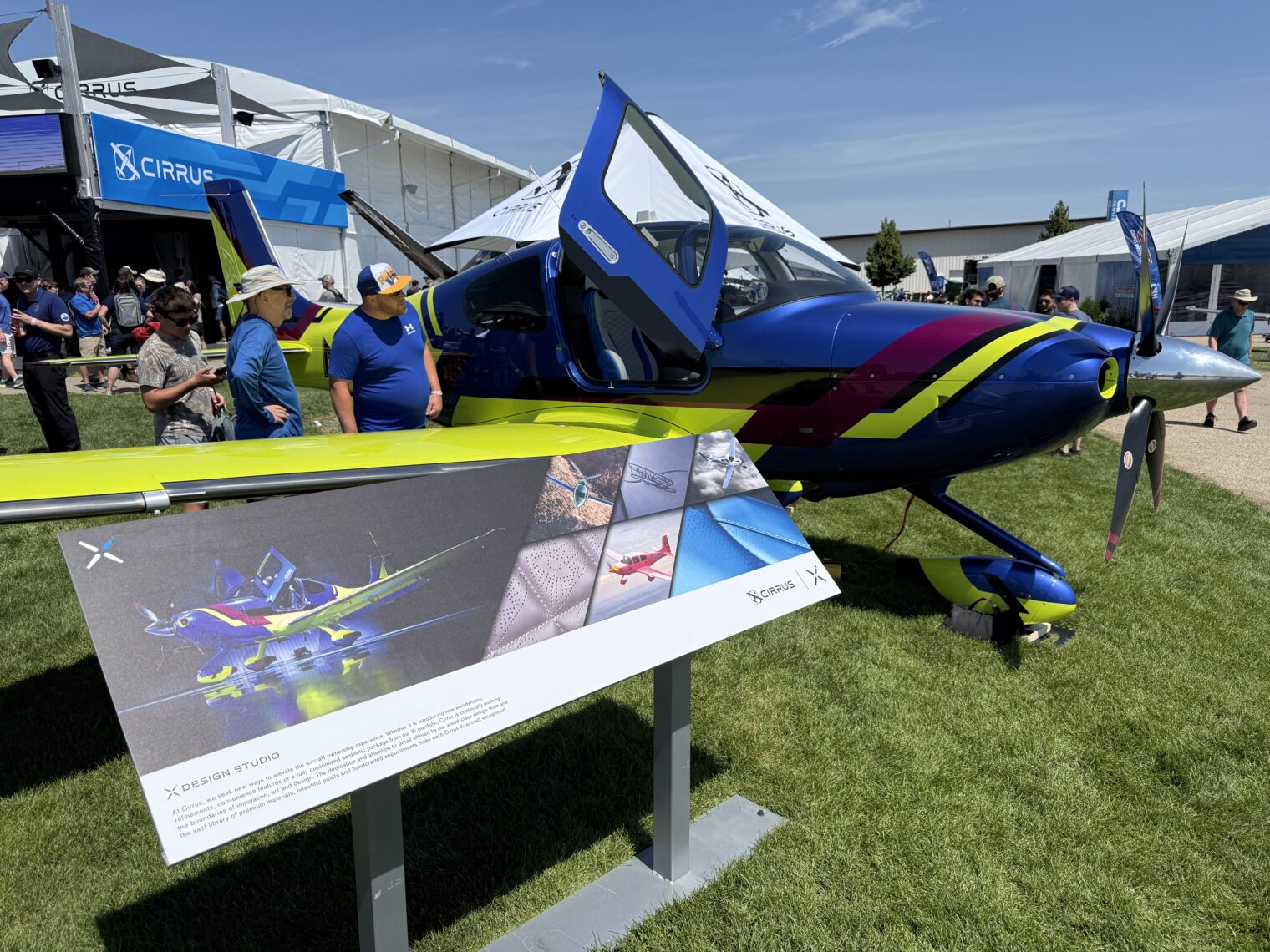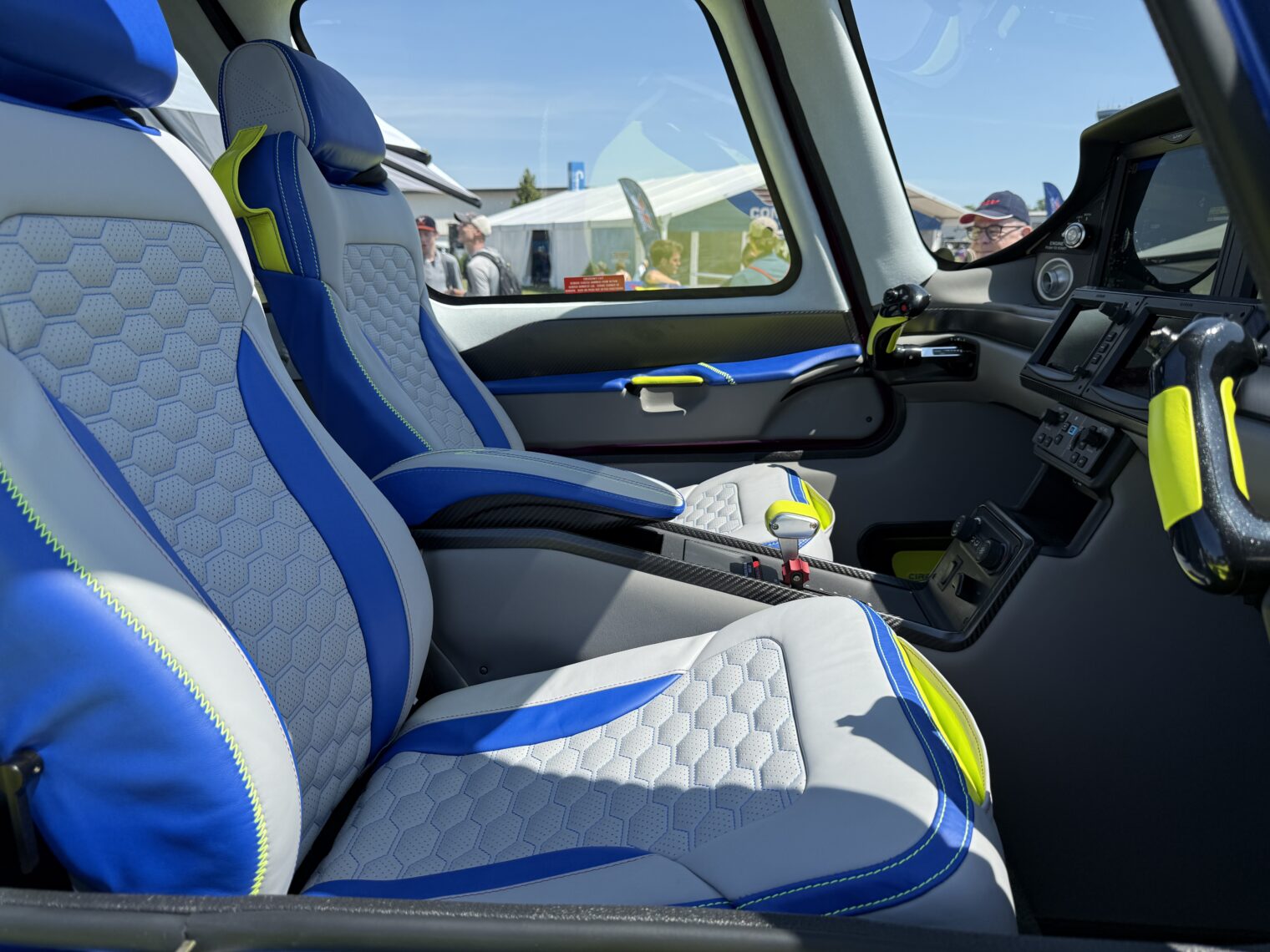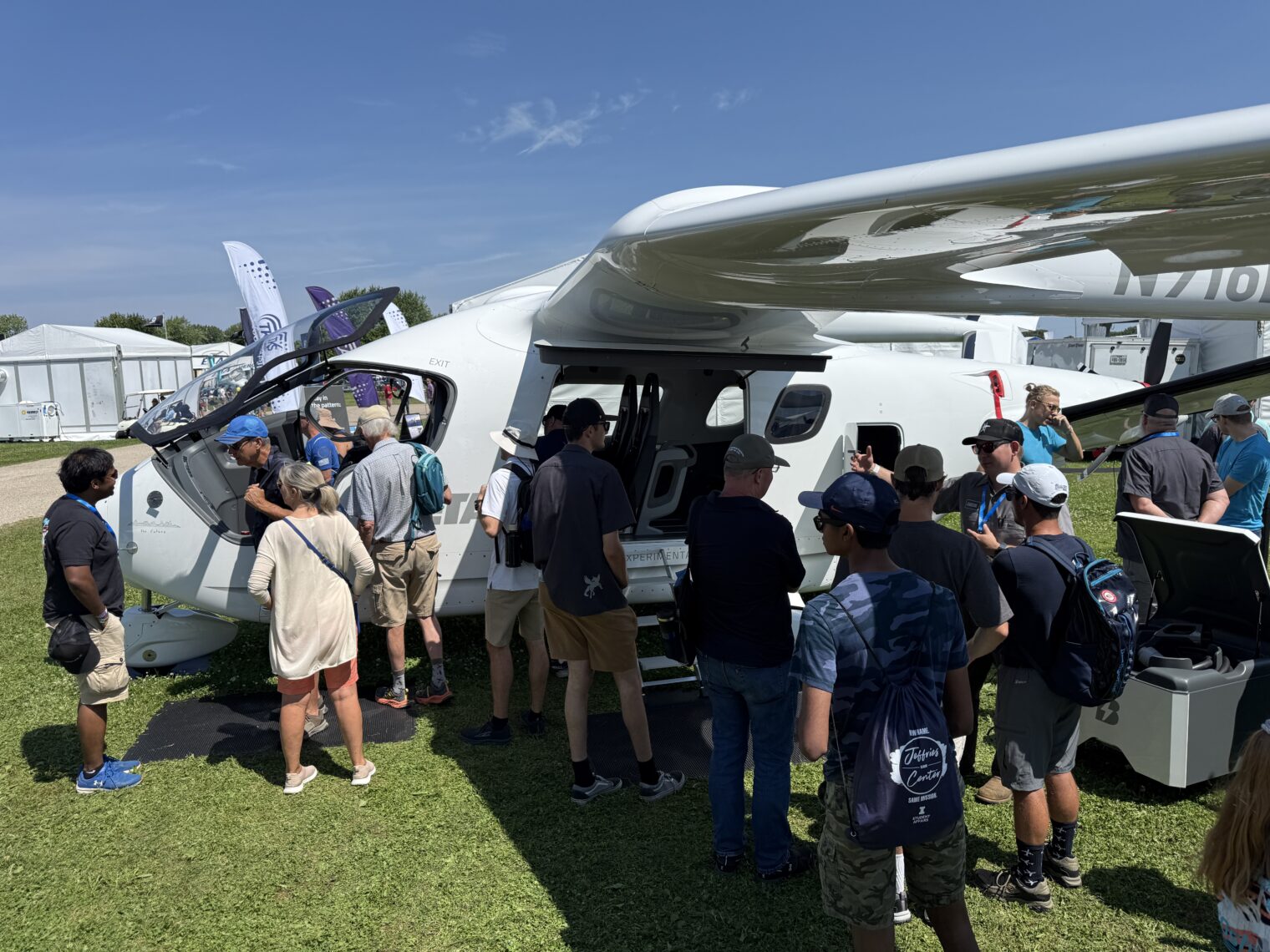BETA Technologies had a busy pavilion at EAA AirVenture (“Oshkosh”) this year. I last wrote about them in 2023: A visit to BETA Technologies in Burlington, Vermont (eVTOL aircraft).
The company’s “CTOL” aircraft was on display in a spacious six-seat configuration. It can supposedly travel 150 nm with a reasonable reserve (215 nm absolute range) with all six seats occupied. An efficient cruise speed is a Robinson R44-style 105 knots. Against a typical headwind maybe the range is more like 130 nm. Make sure not to run out of battery power because the stall speed is 80 knots, which would mean hitting the ground at over 100 mph.
BETA plans to certify the aircraft under FAR 23, which limits single-engine aircraft to a stall speed of 61 knots unless the manufacturer can demonstrate above-and-beyond crashworthiness. This has been stretched to 67 knots by a couple of companies, e.g., Cirrus for the Vision Jet and Pilatus for the PC-12, but nobody has ever gone anywhere near 80 knots. If the BETA has only one propeller how can it get FAR 23 certification? Maybe the answer is that the single propeller/motor combination has two independent motors internally? Thus, the aircraft could actually be considered a centerline twin?
The actual plane at the event has accumulated 250 hours. The pilots who’ve flown it say that it is quiet enough that they remove their headsets when in cruise (electric engine in the back). An air conditioner is coming soon. Finally we might have an aircraft as comfortable as a Honda Odyssey?
(The tail number is N916LF in memory of Lochie Ferrier, a young MIT graduate and former BETA employee who died in a homebuilt aircraft accident in January 2024. We don’t yet have a final NTSB report, but there appears to have been a power loss in a piston engine that may have been unrelated to the aircraft’s experimental status. 9/16 was Lochie’s birthday.)
The vehicle is huge. If a conventional airframe company built this it would have to sell for $3 million just to pay for the aluminum and carbon fiber construction.
How are the legacy piston-powered companies responding to this innovation? A new paint scheme at the Cirrus pavilion:



Guess the electric sector came to its senses & quietly stepped away from the VTOL concepts of 4 years ago. They kept the exact same goofy wing from the VTOL to save on manufacturing costs. Good move to not to photograph the wing.
How can the plane legally fly, I thought assisted suicide was still not allowed?
> An efficient cruise speed is a Robinson R44-style 105 knots.
How would that get me to the Galapagos Islands in 2 hours? I welcome the recent mandated changes to the supersonic rules, except I think the following additional changes should be made so I have time to install sonic-boom-proof windows on my house:
+ 3a) The means of propulsion shall be battery-powered (EV).
I think I would prefer the BETA to the Joby:
https://www.jobyaviation.com/
despite the 200 MPH top speed, and my Mr.-Toad-like need-for-speed. I’m not sure how they’ve approached the propulsion mode transition vs. the Osprey. And what if the battery ran out on the Joby? Coby has an interesting job listing, for an aircraft performance engineer (using Python!):
https://careers-jobyaviation.icims.com/jobs/3999/aircraft-performance-engineer/job
salary: $114K – $186K, I wonder how that compares to a ride-sharing air taxi pilot?
The aviation industry does seem to be evolving, at its usual slow pace.
A couple thoughts:
a) From the BETA website, battery capacity is 45kWh, and max continuous power is 115kW, which translates to 154hp. That’s not much power, but I guess at cruise it could hold this thing in the sky. But at that power setting there’s only 24 minutes of endurance (45kWh/115kW)? So with 24 minutes at that power setting do they get 215nm range? I guess from having an airframe so optimized for efficiency that it stalls at 80 knots.
b) If you’re cruising at 105 knots clean, and stalling at 80 knots with flaps out (does it has flaps?) that is zero margin for turbulence or pilot error or even a 30 degree bank.
c) You get fuel savings over a comparable aircraft like a Cessna 206. Maintenance costs may be cheaper, who knows with battery overhauls. With all the carbon fiber and tricks to reduce weight, purchase price/capital costs and therefore also insurance will be higher. Pilot costs will be the same. Cruise speed is slower than a 206, so all the per hour costs are higher.
My rough math has it at 1000 hours a year for the BETA is about breakeven with a new C206 if they can get the price down to 1.1MM. For that you get an aircraft that is much harder to fly, needs a bigger hangar, is slower, has basically no range, is useful for only niche applications, and is a big unknown.
There are no accounting departments that are going to sign off on buying these, though maybe the marketing departments will find some money to blow on them.